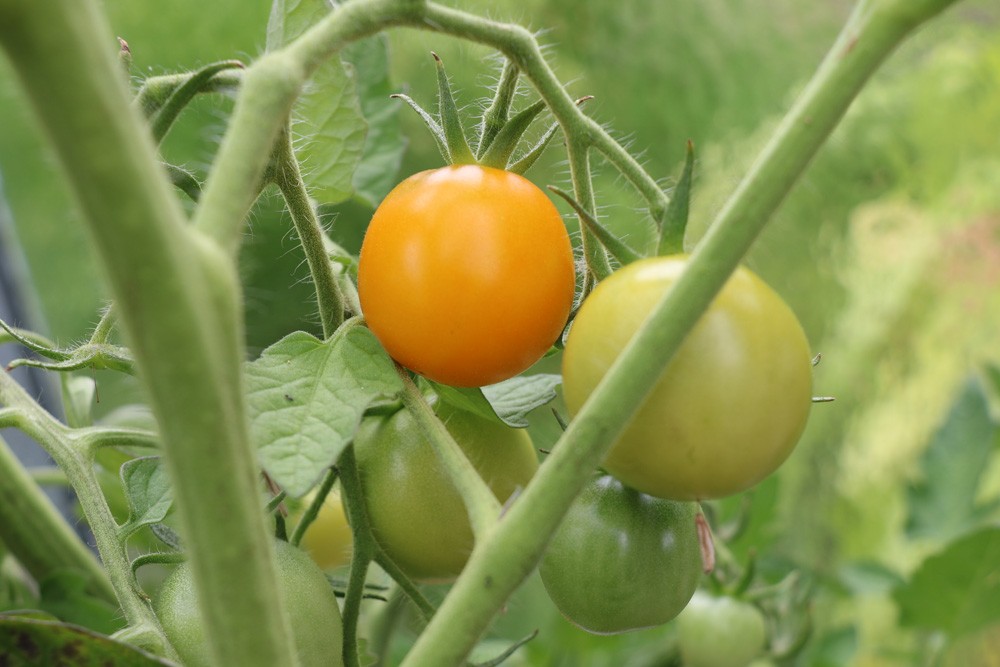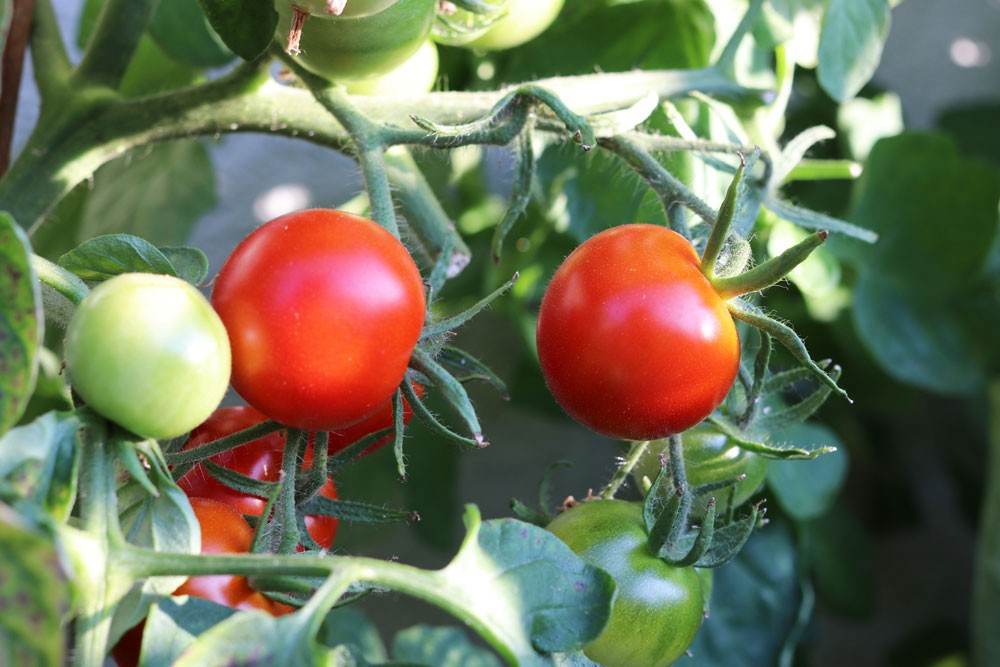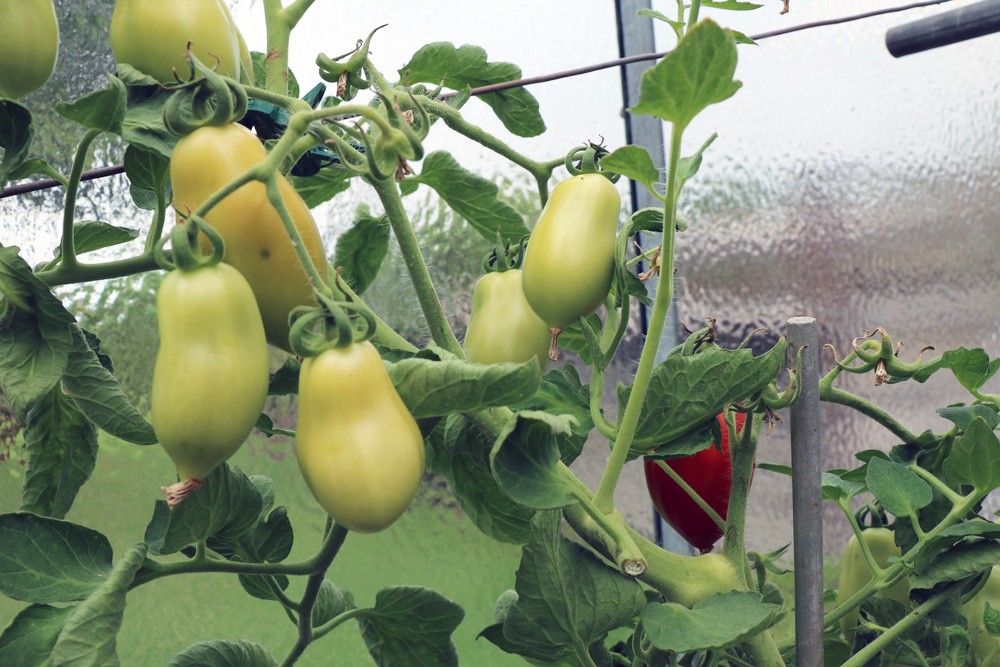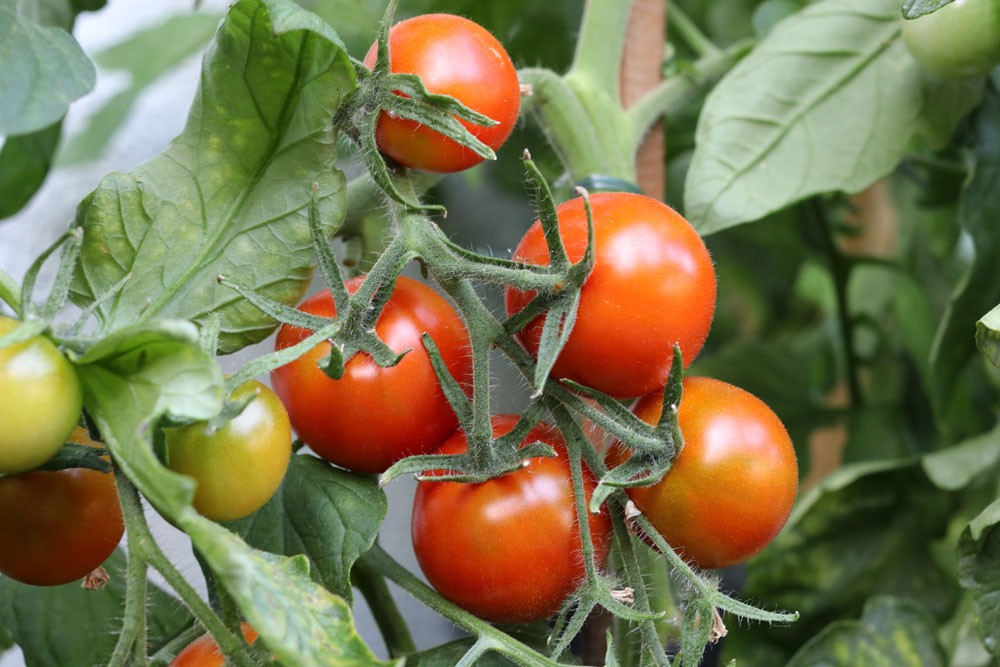Tomatoes want to be watered extensively and especially evenly. But be careful: even with watering a lot can be done wrong! Read here what to consider when watering and how best to supply the tomato plants with water!
Optimal watering of the tomato plant is an essential part of care, because the tomatoes always want to be supplied with water regularly and evenly. However, there are also some things to consider here, because under no circumstances should the tomatoes be watered on a whim. Because both an undersupply and an oversupply of water will harm the tomatoes. We will show you how best to water your tomato plants and give you helpful tips at the same time!
Contents
Water
Outdoors, tomato plants get some of their water from the rain, which is why rainwater is also the most natural form of irrigation. This is because rainwater does not contain as much lime as tap water and is therefore softer than the latter. Ideally, the rainwater is collected in a rain barrel so that there is always enough water available for watering. This also has the advantage that the water is warmed by the sun to the outside temperature and the tomatoes do not suffer a cold shock when watering. Alternatively, of course, the plants can be watered with tap water, but keep the following in mind:
- stale tap water is okay
- it is better to decalcify the water
- do not water with ice cold water
- Warm up the water beforehand
Tip: To warm the tap water, you can simply pour it into a watering can and then place it outside.
When to water?

The timing of watering also plays an essential role, because not every time of day is suitable for this. At lunchtime, the tomatoes should generally not be watered, because the spray could leave water droplets on the leaves. These act like a magnifying glass, so the midday sun could burn the leaves. The late evening hours are also only suitable for watering to a limited extent, as leaves moistened at this time could no longer dry off. This, in turn, would encourage diseases such as drought spot disease or gray mold. It is best to water tomatoes when the sun is not yet in the sky.
- Water early in the morning
- plants have not yet warmed up
- can dry better
- Risk of sunburn less
Note: In the early morning hours, tomato plants are more tolerant of watering with cool water than later in the day.
How often to water?
It is not possible to give a general answer to how often watering is necessary, because many factors play a role here. First and foremost, of course, the location of the plants is crucial, because tomatoes in a protected greenhouse usually need to be watered more often than outdoor tomatoes. Likewise, the tomato variety must be taken into account, because especially tall-growing plants with large fruits require more water than small-growing tomatoes. It is therefore advisable to always adapt watering to the particular plant and its location.
- Water regularly in any case
- irregular water supply stresses the plants
- fruits may burst or brown spots may appear
- never let plants dry out
- as a rule, water every morning
- water more often during hot periods
- do not water outdoors after rain
Tip: It is advisable to check the soil for dryness using a thumb test before watering. This involves sticking a finger into the soil to a depth of about one to two centimeters. If the soil is dry, be sure to water.
How much watering?

The exact amount of water also depends on the particular varieties, but the basic value is that a plant needs about 0.5 to 2 liters of water per summer day. Especially in the first days after planting, the tomatoes should be watered thoroughly, with about 500 milliliters per plant being sufficient. From the first fruit set, increase the amount of water, calculating here per fruit:
- small tomato varieties: 50-100 ml
- medium tomato varieties: 100-200 ml
- large tomatoes: 200-300 ml
Tip: A layer of mulch not only prevents splashing water, but also effectively helps prevent evaporation of water. Suitable mulch material is, for example, straw or nettles, which you spread around the plants.
Irrigation in the open field
In the open field, tomato plants are exposed to the weather, which should definitely be taken into account when watering. Because neither the temperatures nor the sun or the wind can be influenced. Therefore, a fixed time as well as the appropriate amount of water can not be predicted. Nevertheless, to provide tomato plants with sufficient water, simply consider the following:
- do not water after rain
- water more frequently during hot periods
- work in a layer of mulch
- check soil for dryness by means of a thumb test
Tip: Tomatoes like rainwater, but not wet leaves. Ideally, therefore, outdoor tomatoes should be provided with a rain cover so that the leaves do not get wet when it rains.
Greenhouse watering

In the greenhouse, the natural rainfall is missing, but the irrigation can be controlled specifically. Because in the protected space, both the temperature and the light conditions and humidity can be influenced. The greenhouse is also suitable for optimizing the water supply with simple tricks. This is because both PET bottles and small pots make excellent “water reservoirs” and supply the plants with water evenly.
PET bottles
- loosen hard soil first
- Provide bottle opening with watering tip
- so that not so much water runs out at once
- Put the bottle upside down into the soil
- Fill with water daily
Small pots
- ideal made of plastic or clay
- put them next to the tomatoes
- Pots at an angle and dig in only slightly
- holes in the bottom should lead to the roots
- so that the water runs directly to the roots
Tip: Alternatively, watering rings are also suitable for this, which also act as a climbing aid.
Watering in the tub
First and foremost, the size of the pot plays a significant role here, because the larger the container, the more water can be stored by the soil. Accordingly, the smaller the pot size, the more often you need to water. However, watering tub tomatoes additionally requires some tact, because the tomatoes want to stand moist, but in no case too wet. Therefore, it is generally advisable to use containers with a bottom opening. Because through the opening excess water runs off and you also prevent waterlogging. However, if you also want to determine the moisture content of the roots, use the following trick:
- Choose pots without a bottom opening
- drill a hole in the side instead
- close the hole with a dowel
- a conical ground dowel is ideal
- water that accumulates can drain through the hole
Tip: Tomatoes in balcony boxes can be watered regularly and above all evenly using an integrated water reservoir.


